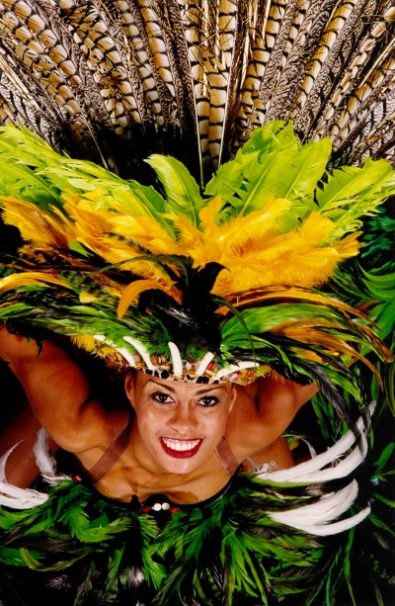
A good kind of blackness ruled two dance concerts that demonstrated the huge range of vernacular dance arising from the African diaspora. Both were spiritual, moving, infectiously joyful, connective, and concerned with communicating with the audience — everything wonderful that dance can be.

First came the Brazilians, the Balé Folclório de Bahia, the national folkloric company from the land of beautiful bodies and rhythms. Booked into the funky Wilshire Ebell Theater, a wonderful venue for dance for its mid-city location and its comforting retro-vibe, the 35-member Balé Folclório unstintingly poured forth two uninterrupted hours of Afro-Brazilian culture—samba, of course, but also capoeira and maculelê, two popular martial arts dance forms. Colorfully costumed bodies-in-motion chanted, stomped, drummed, and flew through the air in acrobatics — filling the viewer’s eyes and ears with a display so witheringly seductive it defied critical distance. The revue, “Sacred Heritage,” rolled out in chapters covering customs and traditions of an agrarian culture. The guileless use of nudity — men and women — had us pinned to our chairs and aware of our prurience — a real cultural experience. And the drumming? A forceful wall of soul-purging sound. Absolutely fantastic. The dancers drummed too.
Then there was Philadanco, the 40-year-old black dance troupe from Philadelphia, performing at the level of the Alvin Ailey troupe, and in my opinion, exceeding Ailey in one key way — Philadanco keeps it real. Philadanco’s superbly trained dancers — each one a giant of the art form — gave of themselves generously at Cerritos Center for the Performing Arts last Friday night in two pieces by Christopher Huggins.
Huggins, a hugely talented and prolific young choreographer a tad overly smitten with acrobatic pas-de-deux pairings for my taste, had the grand moxie to take on nothing less than Ravel’s “Bolero.” His hugely fun and watchable interpretation, “Bolero Too,” emphasized the score’s insistent throbbing over-beat, and its underpinnings as well. He played off the familiar repeating theme by sending couples and small groups downstage to engage in pretzel-partnerships, keeping their colleagues upstage in a chorus line arrangement, pulsing to the beat in dark profile. A very stylish melding of movement with that nutty score. Philadanco’s absolutely beautiful performers, tuned to tip-top calibration, brought this whole bubbling broth to its somewhat predictable boil. Even knowing where it was heading, it was nevertheless a big, bad pleasure to watch.
Both of these five-star events passed beneath the mainstream media’s radar … missing much of the dance audience in our geography and communication-challenged city. Both belong at the Music Center, or at UCLA Live. But, relatively unknown names, they require strong marketing.
